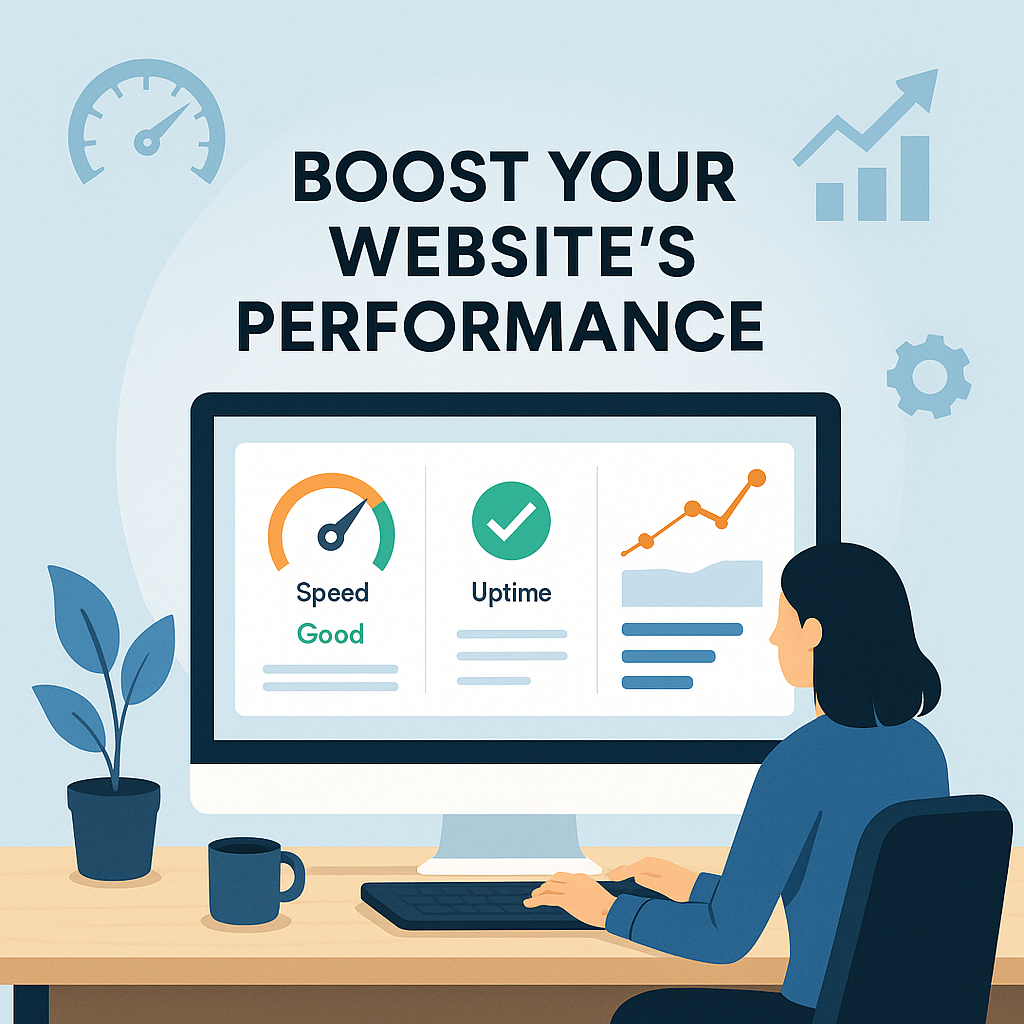
Boost Your Website’s Performance: Expert Tips for Speed and User Satisfaction
In today’s fast-paced digital world, a slow website can be a dealbreaker. Studies show that 53% of mobile users abandon a site that takes longer than three seconds to load. Beyond speed, a website’s performance directly impacts user experience, search engine rankings, and conversion rates. Whether you’re running a blog, an e-commerce platform, or a portfolio site, optimizing your website’s performance is critical to staying competitive. In this article, we’ll share expert tips to help you boost your website’s speed and keep your users happy.
Why Website Performance Matters
Before diving into the how-to, let’s understand why performance is so important:
- User Experience: Faster websites provide a seamless browsing experience, reducing frustration and bounce rates.
- SEO Benefits: Google prioritizes fast-loading sites in its search rankings, making performance a key factor for visibility.
- Conversions: A one-second delay in page load time can reduce conversions by 7%, according to research by Akamai.
- Mobile Users: With over half of web traffic coming from mobile devices, optimizing for mobile performance is non-negotiable.
Now, let’s explore actionable strategies to supercharge your website’s performance.
1. Optimize Images for Faster Load Times
Images often account for the largest portion of a webpage’s file size. Unoptimized images can significantly slow down your site. Here’s how to fix that:
- Compress Images: Use tools like TinyPNG or ImageOptim to reduce file sizes without sacrificing quality.
- Choose the Right Format: Use modern formats like WebP, which offers better compression than JPEG or PNG.
- Lazy Loading: Implement lazy loading to defer off-screen images until users scroll to them. This reduces initial page load time.
- Responsive Images: Serve appropriately sized images based on the user’s device using the
srcsetattribute in HTML.
Pro Tip: Automate image optimization with a content delivery network (CDN) like Cloudflare, which can compress and serve images efficiently.
2. Minimize HTTP Requests
Every file your website loads—CSS, JavaScript, images—requires an HTTP request. More requests mean slower load times. To minimize them:
- Combine Files: Merge multiple CSS or JavaScript files into a single file to reduce the number of requests.
- Use CSS Sprites: Combine multiple small images (like icons) into a single sprite sheet to load them with one request.
- Inline Small Assets: For small CSS or JavaScript snippets, inline them directly in your HTML to avoid additional requests.
3. Leverage Browser Caching
Browser caching allows returning visitors to load your site faster by storing static files (like images, CSS, and JavaScript) locally. To enable caching:
- Set Cache Headers: Use HTTP headers like
Cache-ControlandExpiresto specify how long browsers should store files. - Use a CDN: CDNs cache your content on servers worldwide, reducing latency for users far from your origin server.
- Version Your Assets: Append version numbers or query strings to file names (e.g.,
style.v2.css) to ensure browsers fetch updated files when needed.
4. Optimize Code and Scripts
Bloated or poorly written code can drag your website down. Streamline your codebase with these tips:
- Minify CSS, JavaScript, and HTML: Remove unnecessary spaces, comments, and line breaks using tools like UglifyJS or CSSNano.
- Defer Non-Critical JavaScript: Use the
deferorasyncattributes to load JavaScript files after the main content renders. - Avoid Render-Blocking Resources: Move critical CSS inline and defer non-essential styles to prevent delays in page rendering.
Pro Tip: Use tools like Google’s Lighthouse or PageSpeed Insights to identify and fix render-blocking resources.
5. Improve Server Response Time
Your server’s performance sets the foundation for your website’s speed. A slow server can bottleneck even the most optimized frontend. To improve server response time:
- Choose a Reliable Host: Invest in a high-quality hosting provider with fast servers and good uptime.
- Use a Lightweight Framework: Opt for lightweight CMS platforms or static site generators like Hugo or Gatsby for faster performance.
- Enable GZIP Compression: Compress your server’s responses to reduce the size of HTML, CSS, and JavaScript files sent to users.
- Optimize Databases: For dynamic sites, regularly clean and index your database to speed up queries.
6. Prioritize Mobile Optimization
With mobile traffic dominating the web, your site must perform well on smaller screens and slower networks. Key mobile optimization strategies include:
- Responsive Design: Ensure your site adapts seamlessly to different screen sizes using CSS media queries.
- Accelerated Mobile Pages (AMP): Implement AMP for lightning-fast mobile pages, especially for content-heavy sites.
- Reduce Tap Delays: Eliminate 300ms tap delays on mobile by using
touch-action: manipulationin CSS or frameworks like FastClick.
7. Monitor and Test Regularly
Optimization isn’t a one-time task—it’s an ongoing process. Regularly monitor your site’s performance to catch issues early:
- Use Performance Tools: Tools like GTmetrix, WebPageTest, and Pingdom provide detailed insights into load times and bottlenecks.
- Test on Real Devices: Emulate different devices and network conditions using Chrome DevTools or services like BrowserStack.
- Track Core Web Vitals: Focus on Google’s Core Web Vitals metrics—Largest Contentful Paint (LCP), First Input Delay (FID), and Cumulative Layout Shift (CLS)—to ensure a great user experience.
Bonus: Adopt a Performance-First Mindset
Beyond technical fixes, cultivating a performance-first mindset across your team can make a big difference. Encourage developers, designers, and content creators to prioritize speed in their workflows. For example:
- Designers can create lightweight assets and avoid excessive animations.
- Developers can write efficient code and avoid overusing third-party scripts.
- Content teams can optimize media uploads and keep text concise.
Conclusion
A fast website isn’t just a luxury—it’s a necessity for user satisfaction, SEO, and business success. By optimizing images, minimizing HTTP requests, leveraging caching, streamlining code, and prioritizing mobile performance, you can significantly boost your website’s speed. Regular monitoring and a performance-first mindset will keep your site running smoothly for years to come.
Ready to take your website to the next level? Start implementing these tips today and watch your load times shrink and user engagement soar!
Want to optimize your website’s performance?
Get Started
Comments